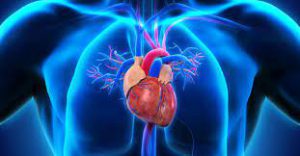
Nội dung bài viết / Table of Contents
This post is also available in: Tiếng Việt (Vietnamese)

The mitral valve in the heart is between the left atrium (a chamber in the top part of the heart). It opens when the atrium pumps blood into the ventricle and closes when the ventricle pumps blood out into the body.
Closing prevents the blood from going back into the atrium. Blood leaking back into the atrium from the ventricle is called regurgitation (or insufficiency or incompetence).
Blood isn’t pumped out of the heart properly, and the atrium cannot fill during the net cycle. Blood may back up in the right-sided system (to the lungs) and cause lungs to fill with fluid. The left ventricle then has to do more work to move blood. This extra work may later cause heart failure.
Mitral regurgitation can occur in any places or races. Mitral regurgitation is usually diagnosed in middle-aged or older. You can minimize the chance of having hernias by reducing your risk factors. Please discuss with your doctor for further information.
People with a small defect have no symptoms. People often live for years without knowing that they have this condition. Symptoms developing after a few years usually include:
There may be some signs or symptoms not listed above. If you have any concerns about a symptom, please consult your doctor.
Meet your doctor if you have side effects from medicines or new or worsening symptoms include:
The cause is damage to the mitral valve. Damage may result from a congenital abnormality (present at birth) or a heart attack.
Other causes are:
Certain factors may increase your risk of developing Mitral regurgitation:
A history of mitral valve prolapse or mitral valve stenosis.
Not having risk factors does not mean you can not get hamstring strains. These factors are for reference only. You should consult your doctor for more details.
The information provided is not a substitute for any medical advice. ALWAYS consult with your doctor for more information.
For mild condition, medicines are used to prevent complications. Surgery consisting of mitral valve replacement is done when regurgitation worsens and medicines don’t work to control symptoms.
The doctor can make a diagnosis by listening to heart sounds. Blood moves abnormally through the mitral valve and causes a sound called a murmur. The doctor hears the murmur help the doctor with a stethoscope.
The doctor may also order sonography of the heart (echocardiography), chest x-rays, and electrocardiography (ECG) to confirm the diagnosis. The x-rays (arrhythmias such as atrial fibrillation) can occur and may cause palpitations or irregular heart beat.
Read more: Mitral stenosis – Symptoms and causes
What are some lifestyle changes or home remedies that can help me manage mitral regurgitation?
The following lifestyles and home remedies might help you cope with mitral regurgitation :
If you have any questions, please consult with your doctor to better understand the best solution for you.
Sources:
Ferri, Fred. Ferri’s Netter Patient Advisor. Philadelphia, PA: Saunders / Elsevier, 2012. Print Edition. Page 37.
Porter, R. S., Kaplan, J. L., Homeier, B. P., & Albert, R. K. (2009). The Merck manual home health handbook. Whitehouse Station, NJ, Merck Research Laboratories. Print Edition. Page 378.
Review Date: January 4, 2017 | Last Modified: January 4, 2017